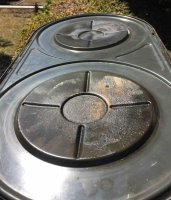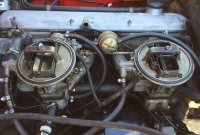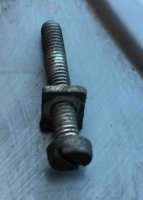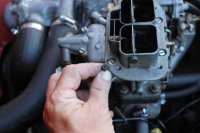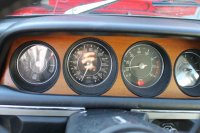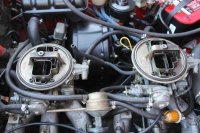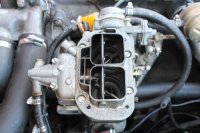Starting to look at why the car has a high warm idle. Weber 32/36.
Cold start works great, after warm up idle stays at 1500 or so. Restarting warm engine also stays at 1500. Don reported 1,2,3 plugs were fouled.
Picture 1 shows that when removing the air filter cover the area on top of the carb near the firewall has much more oily/dark residue than the other. Is that where 1,2,3 are?
Picture 2 shows that at rest the flaps of both carbs are not at an equal angle, the one near the firewall is partially open.
Picture 3 is a loose screw I found on top of the oil filter. What is it?
Anyway I wanted to warm it up and see the chokes in action but the battery died on me and until I recharged it it got dark.
What is the scoop here?
Cold start works great, after warm up idle stays at 1500 or so. Restarting warm engine also stays at 1500. Don reported 1,2,3 plugs were fouled.
Picture 1 shows that when removing the air filter cover the area on top of the carb near the firewall has much more oily/dark residue than the other. Is that where 1,2,3 are?
Picture 2 shows that at rest the flaps of both carbs are not at an equal angle, the one near the firewall is partially open.
Picture 3 is a loose screw I found on top of the oil filter. What is it?
Anyway I wanted to warm it up and see the chokes in action but the battery died on me and until I recharged it it got dark.
What is the scoop here?

